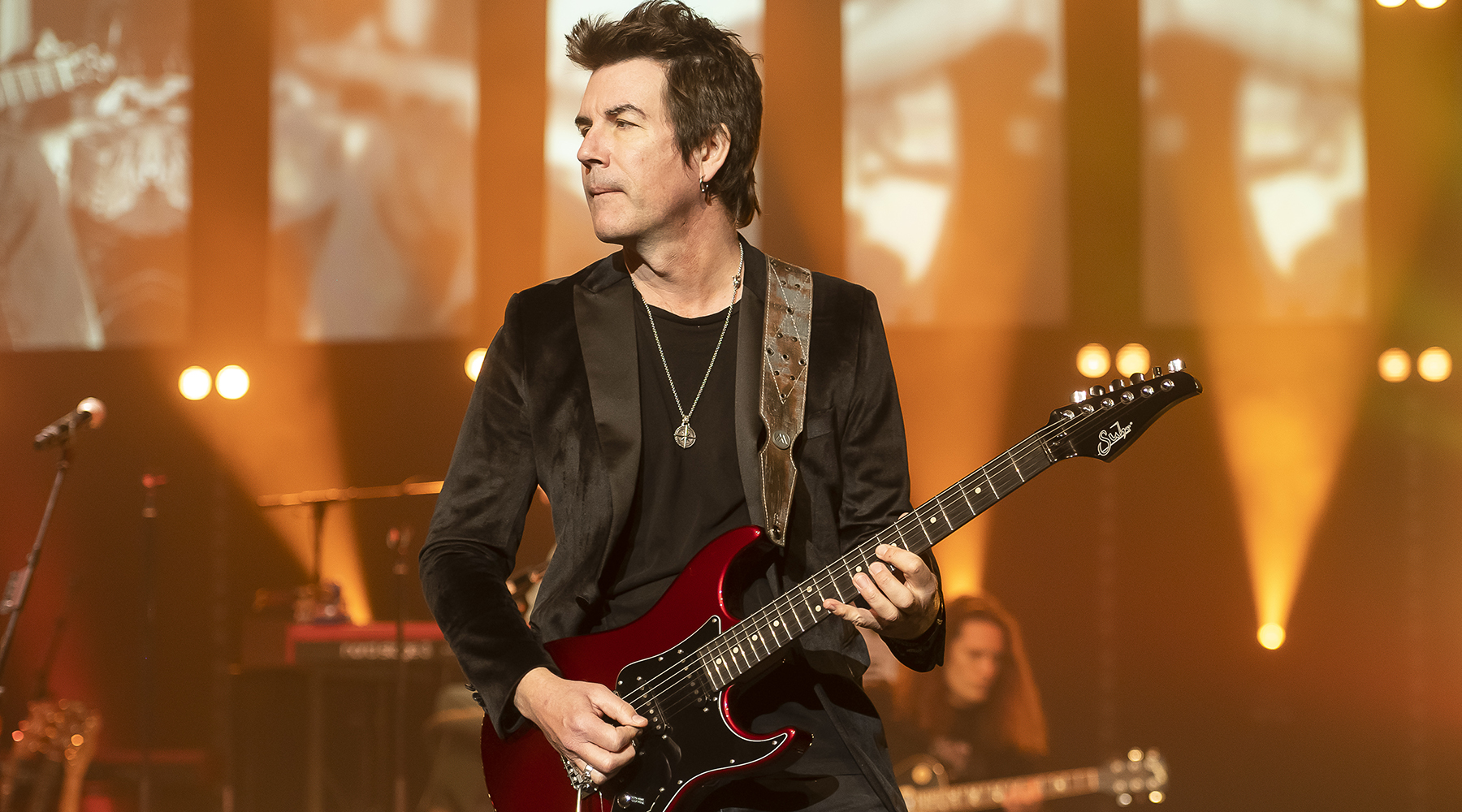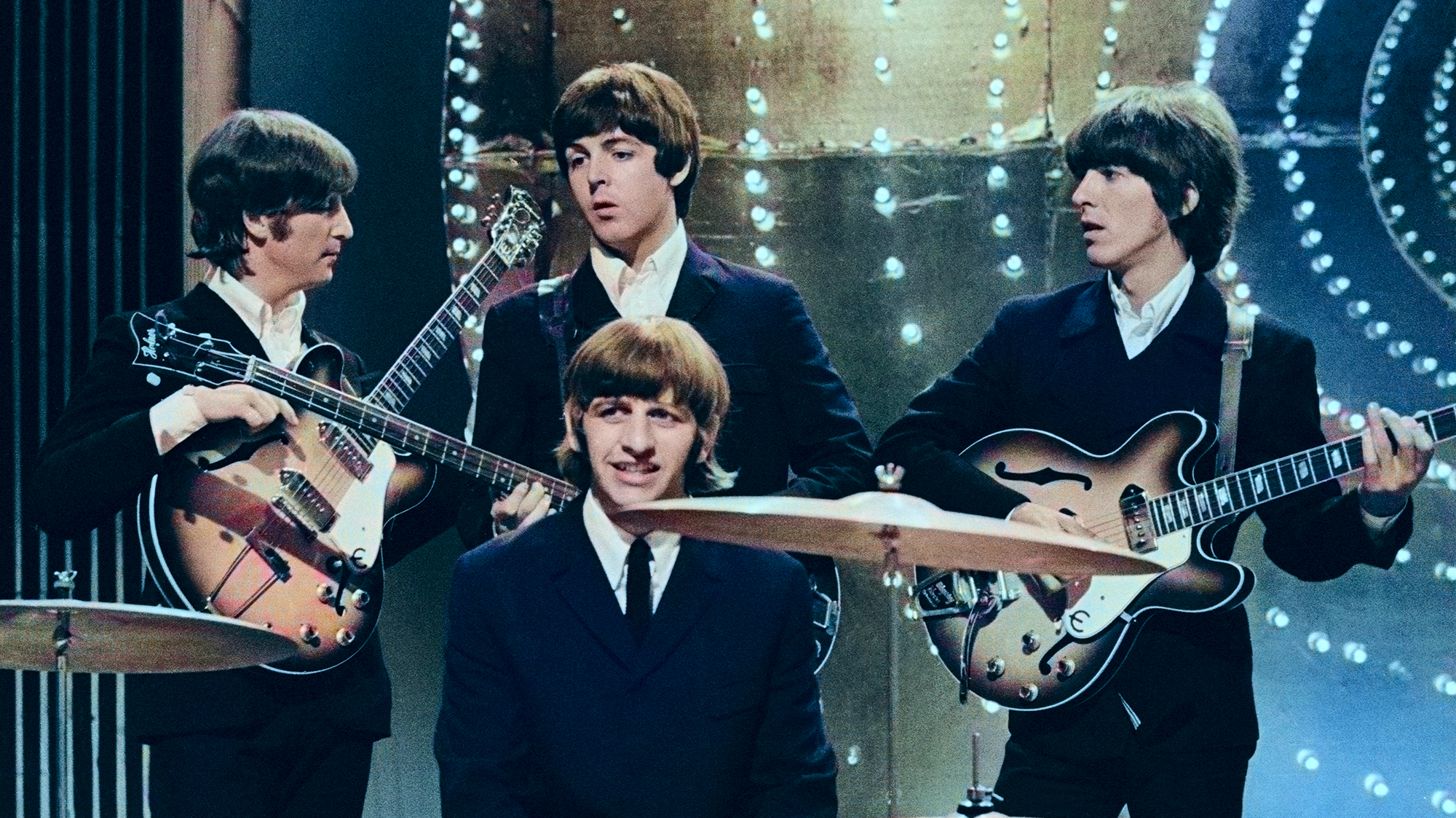“Slash came in with the riff, and I got behind the drum kit... we got it down real quick”: Lenny Kravitz breaks down 5 of his classic songs
High-octane collaborations, sudden, manufacturing-halting bursts of inspiration... the stories behind these songs are as eclectic as the tunes themselves

Lenny Kravitz is not one to spend too much time looking back. Indeed, in a recent conversation with Guitar Player about his fiery new album, Blue Electric Light, the electric guitar ace revealed that though Blue Electric Light hasn't even come out yet, he's already begun work on his next album.
We did ask Kravitz, however, about the stories behind five of the songs that made him a household name.
High-octane collaborations, sudden, manufacturing-halting bursts of inspiration... the stories behind these songs are as eclectic as the tunes themselves.
Mr Cab Driver (Let Love Rule, 1989)
“This was a crunchy riff idea I had – very simple. I was trying to get to the studio one day, and I couldn’t get a cab to pick me up, because a lot of times, if you’re Black and you’re hailing a cab, and you’re going uptown to Harlem, or Brooklyn or whatever, they don’t want to take you.
“Anyway, I got to the studio after an hour of trying to get there, and I was just pissed off. I picked up the guitar and this song is what came out. I was kind of going for a New York, late-’60s or early ’70s grunge kind of sound, maybe some Velvet Underground or something, you know? A real simple thing. The tone on the guitar is real cool – broken up but kind of clean at the same time. A street sound.”
Always On The Run (Mama Said, 1991)
“That was about me and Slash. We went to high school together. I met him again when Guns N’ Roses came out and we were both at an awards show. I said to him, ‘I know you, dude!’ Then we spoke and realized, oh shit, we went to school together. [laughs]
“Anyway, we said we should work together sometime, and then at the end of one of his tours he flew from London on the Concorde to the States, where I was working on the Mama Said album. He came in with the riff for this, I got behind the drum kit and we worked out an arrangement and got it down real quick.
“I picked up a Les Paul and did the opposing part, which I call the funk part – the counterpart. The two guitars together just fit and weave perfectly together. I did the bass part on a Gibson EB bass, and that was it. I then took the track home, wrote the lyrics and melody, and went back in to finish the song. I did a horn chart for it, and there it was, man. It was just a beautiful combination.”
Tunnel Vision (Circus, 1995)
“I used a custom-colored, black ’60s Strat with a matching painted headstock for this. My vision was for a Hendrix-y, funky kind of thing. It was an experience with an amp and a guitar that sounded great together, so I just started fucking around. Then, next thing, this song starts to appear.
“Obviously, Hendrix and funk guitar are key parts of my musical DNA, so this kind of a song is a natural for me. I like the doubling of octaves on the riff and doubling of the chords. It was great fun to play. I like to think of it as funky rock and roll.”
Rock And Roll Is Dead (Circus, 1995)
“There is admittedly a Led Zeppelin feel on this one; I really love Jimmy Page’s playing. Yet again, it was one of those times where a guitar and an amp hit a sweet spot and a riff came out. Very simple, but a great vibe to get that electricity and a very straightforward rock and roll solo.
“In my head, I was doing my Zeppelin-y guitar kind of thing, but then the vocals go off in a whole other direction. It’s just my love of guitar – just playing like a kid, expressing that freedom and joy that the guitar gives you. There’s something magical about playing like the kid that you were in junior high school, making up riffs, you know? That’s the fun of the electric guitar. That’s something that I never lose whenever I pick up a guitar.”
Fly Away (5, 1998)
“The album was done. I’d already turned it in and they were getting ready to manufacture it. I was still in the Bahamas, at the legendary Compass Point Studios in Nassau, where so many incredible records have been made.
“I was testing out an amplifier, and those chords sounded so full and crunchy, and they made me play that chord pattern by virtue of the sound. I thought the chords just sounded real good, so I pulled out the drums and started putting the whole thing together, and next thing I knew, I had the track.
“My daughter was going to school in the Bahamas, and every morning I’d drive her along the coast road. I had this great stereo in my Jeep, and we would blast this track every day on the way to school. I had no idea what it was going to be, and then one day I just heard the whole thing.
“So, I went in the studio, wrote the words, cut the vocal, and now I had this track. But I didn’t know what to do with it – the album was done, right? I thought I’d use it as a single B-side, but a friend of mine who is an architect – not someone in the business – heard it and said, ‘You have to put that song on the album. What’s wrong with you?’ He was so pissed off at me, he said he would no longer speak to me if I didn’t put it on the album. [laughs] He said I was gonna fuck up our friendship. [laughs]
“So I called the record company, who said it was too late but send the song and they’d listen to it. Next thing I know, they said they were stopping the manufacturing and putting the song on the album. We had a huge hit and a Grammy. I obviously don’t know what a hit is – I just know what I do. But it all came from trying out an amplifier and a guitar.”
- Lenny Kravitz's Blue Electric Light can be pre-ordered now.
Get The Pick Newsletter
All the latest guitar news, interviews, lessons, reviews, deals and more, direct to your inbox!
Mark is a freelance writer with particular expertise in the fields of ‘70s glam, punk, rockabilly and classic ‘50s rock and roll. He sings and plays guitar in his own musical project, Star Studded Sham, which has been described as sounding like the hits of T. Rex and Slade as played by Johnny Thunders. He had several indie hits with his band, Private Sector and has worked with a host of UK punk luminaries. Mark also presents themed radio shows for Generating Steam Heat. He has just completed his first novel, The Bulletproof Truth, and is currently working on the sequel.
- Jackson MaxwellAssociate Editor, GuitarWorld.com and GuitarPlayer.com
“We’d heard Jimi Hendrix, we'd heard the Who, but now we finally got to see these guys. And watching Jimi Hendrix burn his guitar….” Grace Slick on Hendrix at Monterey, Jefferson Airplane and the Spanish origins of “White Rabbit”
“I’m still playing but I’m covered in blood. Billy’s looking at me like, ‘Yeah! That’s punk rock!'” Steve Stevens on his all-time worst gig with Billy Idol — and the visit to Jimi Hendrix's grave that never happened
















